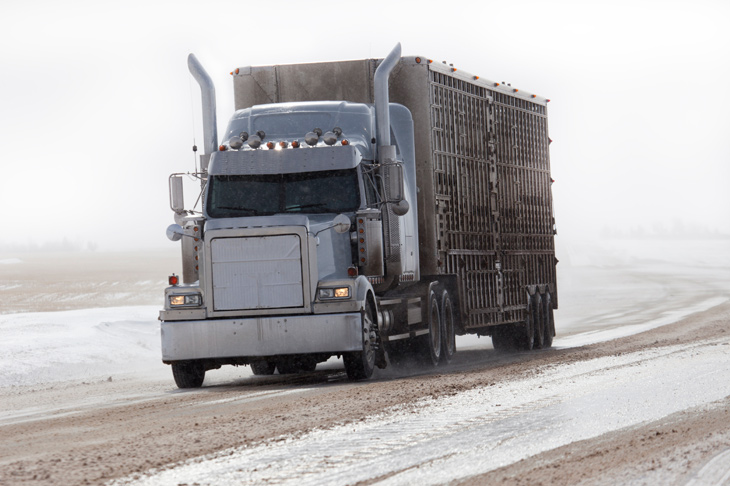Trucking Driving Tips to Stay Safe This Winter

As our nations professional truck drivers are well aware, driving a tractor-trailer demands attention in any weather condition, but the challenge for our drivers is increased during the winter months. Knowing the right skills and techniques and being prepared for driving in poor conditions can be the difference between arriving at your destination safely or meeting misfortune on the road. Here are some ideas to consider as you drive your tractor-trailer this winter, and if your “caught up” in bad weather will make your experience a little easier and safer.
Practice caution and slow down. Many winter driving accidents are caused by excessive speed. The posted legal limit is too fast for snowy or ice-covered roads.
Follow safely. Leave plenty of room between your truck and the vehicles in front of you—1/4 mile is not too much. Avoid traveling in “packs.”
Brake smart. Do not engage the “Jake” or Engine Brake on icy roads, and avoid heavy foot braking. To help avoid jackknifing, keep the entire unit as straight as possible when braking, or the trailer can slide and spin you out of position, especially when empty.
Avoid cruise control. As with engine brakes, in icy conditions, cruise control can activate at the worst possible moment resulting in a driver unexpectedly losing control of their vehicle.
Watch the road, not the lights. If you are following the tail lights of the vehicle in front of you in heavy snow, you’re too close. Also, there is a chance you could follow another truck off the road unintentionally.
Check everything. Be sure that the defroster, heater, wipers, headlights, running lights, brake lights, taillights, and other critical safety systems are all working properly. Also, check to ensure your vehicles fluids are topped off. It is a good idea to carry extra supplies, such as windshield washer fluid, airline deicer, fuel additive treatment, possibly spare fuel filters and even a set of jumper cables.
Clean it. Remove snow and ice from your truck and its lights before you start and, just as importantly, whenever you stop. Be especially watchful around LED lights, which do not generate enough heat to melt snow that accumulates on them.
Be prepared. Be sure your truck has all the necessary supplies for winter driving conditions. In addition to keeping regular safety gear and supplies in your cab, it is a good idea to pack the following cold-weather essentials:
- Winter clothing: jacket, hat, gloves, and boots.
- Winter personal gear: blankets (at least one heavy), flashlight and batteries, cell phone and it’s battery charger, first aid supplies and matches or a lighter and a large diameter candle
- Extra supply of medications.
- Nonperishable food and water.
- Winter safety equipment, including reflective vest, tarp, shovel, chains, and jumper cables.
- A basic mechanical tool kit to make minor repairs or adjustments.
Don’t be a hero. No load is important enough to risk injury. If the weather is so severe that you need to get off the road, do it. Avoid stopping on the shoulder, however, as you could be mistaken for being on the road.
Many winter driving tips come down to common sense, but they are easy to overlook when stressed. Take the time before you begin a route to plan for any winter weather and ensure you get to your destination safely.
An insurance company that cares about you and insuring the things you wish to be insured.
Get a Quote> Find an Agent>

